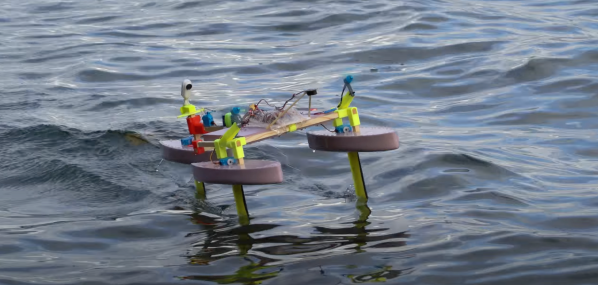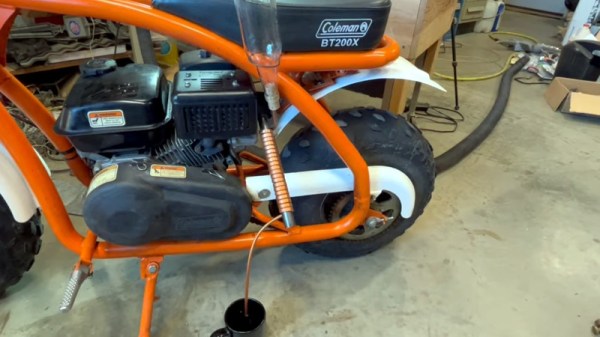Earlier in the year, [rctestflight] created an active hydrofoil RC craft but found the actual performance very lacking. Luckily for him and for us, he continued to tweak it and one tweak suddenly turned it from a nightmare to a dream.
That tweak was adding ArduPilot’s airplane model. The design had three servos, which each actuated the angle of a foil underneath one of the three pontoons. The ship propelled itself via some propellers mounted near the top. If you know much about ArduPilot, you notice that active hydrofoil boat doesn’t show up on the list of supported platforms, and you’re right. [rctestflight] points out that the three servos actually function as a plane underwater. The front two are ailerons and the back one is an elevator, all things that ArduPilot knows how to handle with a tightly controlled loop except for one thing; there’s no altitude data.
So he stole a trick he developed earlier for his ground effect plane and used a distance sensor to let ArduPilot know how to adjust things. He used a sonar sensor instead of lidar as it works better with water and he was pleasantly surprised when he took it out on the lake and it just worked wonderfully. The original goal with the active stabilization was to have the efoil immune to choppy waters, and we’re sad to say that it didn’t quite reach that lofty target. The single sonar sensor follows the wave in front of it beautifully but can’t handle the complex waves being thrown at it. Perhaps some sort of sensor fusion algorithm could provide the necessary data to be truly resilient. But we love watching the foil glide across the water and it is hard to remember that it’s actively flying rather than just floating that way.
Others have tried and failed to 3D print a hydrofoil while others have succeeded. We love that [rctestflight] came back to finish the fight and came away a champion. Video after the break.

















